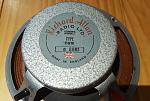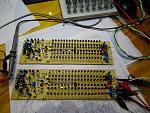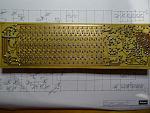I finally got around to doing some measurements on the discrete op amp at G=2 and G=10.
These were non inverting mode - note the voltage was 6-8V p-p, and the rails were +/-15V so there was a fair whack of headroom. Anyway, I will let the measurements speak for themselves.
This is what they looked like...

I tested a whole bunch of configurations of the DOA, including:
Differential pair current 1, 1.5, 2 and 4mA
Output current 8mA (2* 4mA) and 12mA
VAS current 1.5, 3mA.
The test setup was a dual op amp board, one channel set to G=2 the second set to G=10.
The load for G=2 was 1kOhm. The load on G=10 was 10kOhm. I could go back and retest this... I had not lingered on this during the test.
The first challenge I found was MASSES of noise really messing with the results. It looked a lot like oscillation, and I kid you not, I spent hours trying...

























